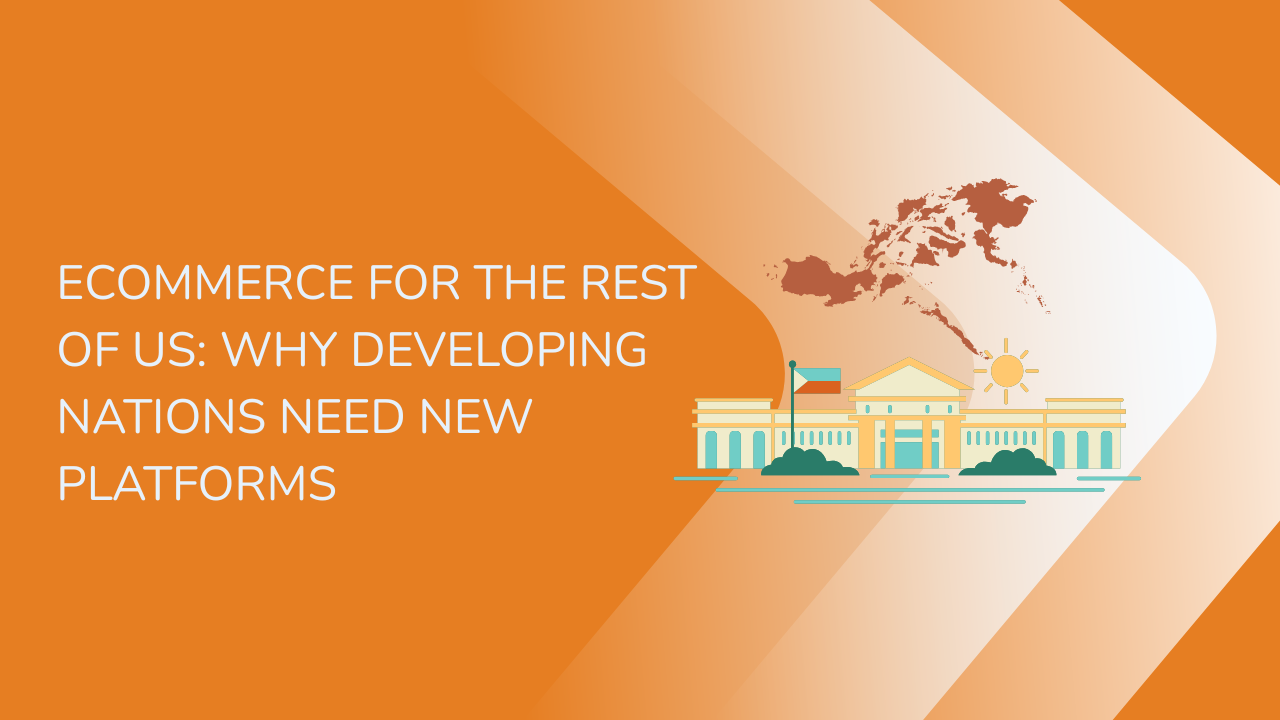Share this Article
Introduction
How To Choose The Right E-Commerce Platform In Nepal
The growth of e-commerce in Nepal has been nothing short of remarkable in recent years. What was once seen as a slow-moving industry has now emerged as one of the most promising sectors in the Nepali economy. This shift is largely driven by rapid urbanization, increased internet connectivity, the affordability of smartphones, and a rising middle-class population that is eager to experience the convenience of online shopping. In major cities like Kathmandu, Pokhara, and Biratnagar, consumers are increasingly turning toward digital solutions for their everyday needs, ranging from groceries and electronics to fashion and home essentials. This steady growth has opened up countless opportunities for entrepreneurs, startups, and established companies, all of whom are exploring ways to build sustainable online businesses. However, the foundation of any successful digital business lies in choosing the right e-commerce platform. A poor choice can result in frequent technical issues, limited growth, dissatisfied customers, and wasted investments, whereas the right choice can fuel scalability, adaptability, and long-term profitability.
Understanding why this choice matters requires a closer look at Nepal’s unique e-commerce environment. Unlike in developed countries, where infrastructure and systems are more advanced, Nepal’s digital ecosystem presents both exciting opportunities and significant challenges. Consumers in Nepal are still developing trust in online platforms, particularly when it comes to payments, delivery reliability, and product authenticity. Businesses must therefore be prepared to not only market their products but also to build confidence among customers. The choice of platform plays a central role in achieving this trust, as it determines everything from the smoothness of checkout processes to the ability to integrate with local payment solutions and logistics providers.
The story of e-commerce in Nepal cannot be told without tracing its evolution over the past two decades. In the early 2000s, very few people in Nepal had access to the internet, and online shopping was virtually non-existent. The handful of companies that experimented with selling goods online faced challenges such as low customer awareness, lack of payment systems, and poor delivery networks. For years, e-commerce remained an unfamiliar concept, limited to a few urban elites. Things began to change gradually as internet penetration improved and Nepali consumers were exposed to international platforms like Amazon and eBay. The arrival of mobile payment systems such as eSewa and Khalti marked a turning point, as these made online transactions more accessible to the general public. The COVID-19 pandemic further accelerated this shift, as lockdowns forced businesses and customers to rely on digital platforms for essential products. Today, Nepal’s e-commerce industry is thriving, with platforms like Daraz, SastoDeal, Foodmandu, and HamroBazar becoming household names.
In this context, the need for a carefully chosen e-commerce platform becomes clear. Entrepreneurs must think beyond simply putting their products online. They must consider how their platform will adapt to fluctuating market trends, how it will integrate with local services, how it will secure customer data, and how it will enable them to compete in a digital economy that is becoming more crowded with each passing year. This article therefore aims to guide entrepreneurs, small business owners, and established enterprises through the process of selecting the most suitable e-commerce platform for their needs in Nepal. It will explore everything from scalability and customization to payment integration, logistics, affordability, marketing tools, analytics, and future trends. By the end, readers will gain not just a checklist of features but a deep understanding of what it takes to thrive in Nepal’s e-commerce landscape.
What an E-Commerce Platform Is and Why It Matters
An e-commerce platform is more than just a website where products are displayed and customers place orders. It is a complete digital infrastructure that allows businesses to manage online sales, process transactions, store data, communicate with customers, and integrate with third-party services such as payment gateways and delivery providers. At its core, an e-commerce platform is the backbone of any online business, serving as both the storefront visible to customers and the management system that operates in the background. In the context of Nepal, where businesses often need to handle both online and offline operations simultaneously, the right platform ensures smooth coordination and reduces operational friction.
There are different types of e-commerce platforms available globally and locally, and each comes with its own advantages and challenges. One category is hosted platforms, which provide ready-to-use solutions for entrepreneurs who may not have technical expertise. Platforms like Shopify fall into this category, offering pre-built templates, plug-and-play integrations, and subscription-based pricing. Another category is open-source platforms such as WooCommerce or Magento, which provide greater flexibility and control but require more technical knowledge and resources to manage. The third category is fully customized platforms built from scratch, often tailored to meet the unique needs of a business but usually demanding higher investments of time, money, and skilled developers. For Nepali businesses, the decision among these categories depends on their budget, technical resources, and long-term goals.
The importance of an e-commerce platform extends far beyond technical functionality. It directly affects the customer experience, which is arguably the most critical factor in building trust in Nepal’s growing digital economy. If a platform offers seamless navigation, quick loading speeds, secure payment options, and reliable delivery integration, customers are more likely to return and recommend the business to others. On the other hand, if the platform is difficult to use, frequently crashes, or fails to provide reassurance during checkout, customers may abandon their carts and hesitate to shop online again. In a country where e-commerce is still overcoming skepticism, the platform becomes a deciding factor in establishing credibility.
Another reason why the choice of e-commerce platform matters in Nepal is its role in enabling business scalability. Many entrepreneurs start small, selling a handful of products to a limited audience. However, as demand grows, the platform must be capable of supporting larger inventories, higher traffic volumes, and advanced features such as analytics dashboards, loyalty programs, and automated marketing. A poor choice in the beginning can result in the need for costly migrations later, disrupting the business and losing customers in the process. A platform that is scalable from the start allows Nepali businesses to grow steadily without constant reinvestment in new technologies.
The matter of integration cannot be ignored either. In Nepal, businesses often need their platforms to connect smoothly with mobile wallets like eSewa and Khalti, courier services for delivery, and social media for marketing. If the chosen platform does not support these integrations, businesses will face bottlenecks in operations and difficulties in reaching customers. Choosing a platform that is compatible with the local ecosystem therefore ensures efficiency and competitiveness.
Finally, an e-commerce platform is not just a technological decision but also a strategic one. The features it offers shape how businesses communicate with customers, how they market products, how they manage logistics, and how they adapt to market shifts. In a fast-changing digital environment like Nepal’s, where customer expectations and technological advancements evolve rapidly, the platform serves as both a foundation and a catalyst for success. This is why business owners in Nepal cannot afford to take the decision lightly—it is the digital equivalent of choosing the right location, infrastructure, and team for a traditional brick-and-mortar store.
Challenges and Opportunities of E-Commerce in Nepal
E-commerce in Nepal exists in a space defined by both significant challenges and immense opportunities. On one hand, the digital economy is still developing, and infrastructure gaps create barriers for businesses and consumers alike. On the other hand, a young and increasingly tech-savvy population is embracing online shopping at a faster pace than ever before. To understand why choosing the right e-commerce platform is so important, it is necessary to first look at these challenges and opportunities in detail.
One of the most pressing challenges for e-commerce in Nepal is the state of infrastructure. While internet penetration has grown substantially, with millions of users now connected through mobile data and broadband, the quality of service is inconsistent across the country. In urban centers like Kathmandu or Pokhara, users may enjoy relatively stable connections, but in rural areas—which represent the majority of Nepal’s population—slow speeds and connectivity issues persist. This uneven access limits the potential customer base and poses difficulties for businesses aiming for nationwide reach. A robust platform must therefore be optimized for performance even on slower connections, ensuring accessibility for a diverse audience.
Delivery and logistics form another critical hurdle. Nepal’s geographic diversity, from flat plains to mountainous regions, makes timely delivery a logistical challenge. While courier companies have grown in number, offering services in cities and semi-urban areas, reaching remote villages remains difficult and costly. Delayed deliveries, misplaced orders, and high transportation costs can affect customer satisfaction and discourage repeat purchases. Businesses must rely on platforms that allow smooth integration with reliable courier services, efficient tracking systems, and inventory management features to minimize these risks.
Payment systems also represent both a barrier and an opportunity. Although digital wallets like eSewa, Khalti, and FonePay have gained popularity, a large percentage of consumers still prefer cash-on-delivery. This preference stems from a lack of trust in online payments and concerns about fraud or failed transactions. For e-commerce businesses, this means that platforms must accommodate hybrid models where customers can choose between cash and digital payment methods. Failure to do so may alienate significant segments of the market.
Customer trust remains a fragile issue in Nepal’s e-commerce sector. Many consumers are hesitant to buy online due to past experiences with low-quality products, lack of return policies, or delayed deliveries. This skepticism makes it vital for businesses to select platforms that enable transparent communication, easy refund and return options, and reliable customer service. Without these features, businesses risk losing customers even before they gain traction.
Despite these challenges, the opportunities in Nepal’s e-commerce sector are enormous. The country has a predominantly young population, with a significant portion under the age of 35. This demographic is digitally inclined, active on social media, and open to trying new shopping experiences. As more of these consumers earn disposable income, they represent a growing market for e-commerce businesses that can meet their expectations.
Another opportunity lies in the underdeveloped state of the industry itself. Unlike in highly competitive global markets, where e-commerce giants dominate, Nepal still has space for new players to emerge and establish strong market positions. Entrepreneurs who act now, with the right strategies and platforms, have the chance to build loyal customer bases before the market becomes saturated.
The increasing adoption of smartphones also fuels this opportunity. Mobile-first shopping experiences are becoming the norm, with consumers browsing and purchasing directly from their phones. Platforms that are optimized for mobile use, offering responsive designs and simple interfaces, will have a clear advantage. This mobile-focused growth is expected to expand further as 4G and eventually 5G networks spread across the country.
Government policies and initiatives add another layer of opportunity. In recent years, the government of Nepal has shown interest in promoting digital payments, supporting entrepreneurship, and developing regulations to foster online businesses. While challenges remain in terms of taxation and compliance, the general direction of policy is supportive of digital transformation. Businesses that align with these initiatives and select platforms capable of meeting compliance requirements will be better positioned for growth.
In addition, the cultural shift toward convenience is creating momentum. Urban households, busy with work and education, are increasingly turning to online platforms for groceries, electronics, fashion, and even daily essentials. This growing demand means that businesses that deliver efficiently and consistently can secure a loyal customer base.
Ultimately, the dual reality of challenges and opportunities highlights why the choice of an e-commerce platform is so crucial in Nepal. The platform must be capable of overcoming the hurdles of infrastructure, logistics, and payment limitations, while also capitalizing on the opportunities presented by young consumers, government support, and shifting cultural habits. A platform that balances these considerations will not only sustain a business but also help it thrive in the long run.
Key Factors to Consider When Choosing an E-commerce Platform in Nepal
Selecting the right e-commerce platform is not a one-size-fits-all decision. Every business has its own goals, resources, and audience, which means the platform that works for one company may not suit another. For Nepali businesses, the decision becomes even more critical because of the unique dynamics of the local market. Entrepreneurs must look beyond flashy designs and low costs, instead focusing on features that ensure long-term growth, customer satisfaction, and operational efficiency. Several key factors must therefore be examined carefully before making the choice.
The first factor is scalability and growth potential. Many businesses in Nepal start small, perhaps selling only a handful of products or catering to a limited geographic area. However, as demand grows, the platform must be capable of expanding alongside the business. Scalability includes the ability to add more products, handle larger traffic volumes during peak shopping seasons like Dashain and Tihar, and support more advanced features such as loyalty programs or automated marketing. A platform that struggles under higher demand will not only frustrate customers but may also prevent the business from reaching its full potential. Therefore, selecting a scalable solution ensures that the investment made today will remain valuable as the business grows tomorrow.
Customization and design flexibility represent the second major factor. In Nepal, where cultural identity and aesthetics play a significant role in consumer behavior, businesses often need platforms that can be tailored to reflect their brand personality. This might mean incorporating Nepali language support, integrating cultural motifs into design templates, or adjusting layouts to create a more localized shopping experience. Platforms that allow easy customization through drag-and-drop tools, plugins, or coding flexibility give businesses the freedom to craft a store that truly resonates with their audience. Without this flexibility, companies may end up with generic stores that fail to stand out in a competitive marketplace.
The third factor is payment gateway integration. This is particularly important in Nepal, where digital payments are still evolving. While digital wallets like eSewa, Khalti, and FonePay have gained immense popularity, many consumers still rely on cash-on-delivery. A platform must therefore provide options for both online and offline payment systems. In addition, it should support integration with mobile banking and credit card services for customers who prefer those methods. Platforms that are limited to international gateways like PayPal or Stripe may not work effectively in Nepal, as many customers lack access to these systems. Choosing a platform that supports local payment options is therefore essential for capturing the widest possible customer base.
Another factor that demands attention is logistics and delivery management. Because Nepal’s geography poses unique challenges, businesses need platforms that can connect seamlessly with courier companies to ensure smooth delivery processes. Features such as real-time order tracking, inventory management, and automated shipping labels can save time and reduce human error. In addition, platforms that allow businesses to set different delivery zones and charges based on location are particularly useful in Nepal, where costs and timelines vary drastically between cities, towns, and remote villages. Without strong logistics support, even the best-designed online store will struggle to meet customer expectations.
Security and data protection form the next critical consideration. In a digital environment where many customers remain cautious about online transactions, businesses must take extra steps to ensure trust. A secure platform equipped with SSL certificates, encryption, and fraud protection features can reassure customers that their data is safe. Moreover, platforms that comply with international data security standards can help Nepali businesses maintain credibility and potentially expand into global markets. Ignoring security not only puts customers at risk but can also damage a business’s reputation beyond repair.
Cost and affordability must also be evaluated carefully. For small and medium enterprises in Nepal, budget constraints are often a major concern. Some platforms charge a fixed monthly subscription, while others operate on a commission basis, taking a percentage of each sale. There may also be hidden costs for themes, plugins, or transaction fees. Entrepreneurs should consider not just the upfront cost but also the long-term financial sustainability of the platform. Sometimes, opting for the cheapest solution may result in limitations that restrict growth, whereas a slightly higher investment in a feature-rich platform may pay off in the long run.
Ease of use is another factor that cannot be overlooked. Many Nepali entrepreneurs may not have advanced technical expertise, which means they need platforms that are user-friendly and intuitive. A platform with a steep learning curve may slow down operations and require costly training or developer support. On the other hand, a platform that offers simple dashboards, clear analytics, and easy product management tools enables entrepreneurs to focus more on growing their business rather than struggling with technology.
Marketing and SEO capabilities represent an equally important consideration. In Nepal, where social media platforms like Facebook, Instagram, and TikTok dominate digital interactions, businesses need e-commerce platforms that allow direct integration with these channels. Features such as product sharing, shoppable posts, email marketing, and SMS campaigns can enhance visibility and drive sales. Similarly, platforms with strong SEO tools help businesses rank better on search engines, ensuring that customers can find them easily. Since Nepali consumers often begin their shopping journey on search engines or social media, having these tools built into the platform can make a significant difference in sales performance.
Finally, customer support and training resources play a crucial role in platform selection. Nepali businesses often face unexpected challenges, whether technical glitches, payment issues, or delivery delays. Having access to responsive customer support from the platform provider can save valuable time and reduce disruptions. Platforms that also offer tutorials, forums, and documentation empower entrepreneurs to troubleshoot problems on their own. This is particularly useful in Nepal, where access to specialized technical expertise may be limited.
When taken together, these factors highlight the complexity of choosing an e-commerce platform in Nepal. It is not just about picking a platform that looks appealing or comes at a low cost. Instead, it is about identifying a solution that aligns with the business’s current needs, anticipates future growth, integrates with the local ecosystem, and ensures customer trust. A well-chosen platform can serve as the foundation for long-term success, while a poor choice can become an obstacle that stifles progress.
Comparing Global and Local E-Commerce Platforms
When choosing an e-commerce platform in Nepal, one of the most important decisions entrepreneurs face is whether to opt for a global platform or a locally developed solution. Both options offer distinct advantages and limitations, and understanding these differences is crucial for making an informed choice.
Global platforms such as Shopify, WooCommerce, Magento, and BigCommerce have earned reputations for reliability, scalability, and extensive features. Shopify, for example, provides an intuitive interface, a vast array of customizable templates, and a strong ecosystem of third-party apps that enable businesses to expand functionality without extensive technical knowledge. WooCommerce, built on WordPress, offers flexibility for entrepreneurs who wish to have more control over customization, allowing for the integration of multiple plugins and personalized design elements. Magento, on the other hand, is suitable for larger enterprises that require advanced functionalities, complex inventory management, and multi-store operations. These global platforms are often updated regularly, benefit from international developer support, and have a track record of success in multiple countries, which can be appealing for businesses that aim to scale beyond Nepal.
However, global platforms are not without challenges when applied to the Nepali context. Many of these platforms are designed for Western markets, meaning that integration with local payment gateways such as eSewa, Khalti, or FonePay is not always seamless. Cash-on-delivery support may be limited or require third-party extensions, adding extra complexity. Additionally, some features come at an extra cost, and monthly subscription fees or transaction charges can be high when compared to local alternatives. Support may also be delayed or less tailored, as global platforms primarily operate in English and may not be fully attuned to the nuances of Nepal’s digital ecosystem.
Local Nepali platforms and custom-built solutions, in contrast, are specifically designed to address the realities of doing business within the country. These platforms often come pre-integrated with popular Nepali payment gateways, offer cash-on-delivery workflows, and provide straightforward interfaces for managing logistics with local courier services. Customer support is typically available in Nepali, making it easier for business owners to resolve issues promptly. Furthermore, local platforms are often better equipped to understand cultural expectations, such as language preferences, localized marketing strategies, and the presentation of products that resonate with Nepali customers.
A hybrid approach is becoming increasingly common. Many Nepali businesses leverage local platforms for their primary operations, particularly for domestic sales, while using global tools to access advanced features, marketing capabilities, or international expansion. This approach allows companies to enjoy the reliability and global support of international platforms while remaining closely connected to the local ecosystem.
Ultimately, the choice between global and local platforms comes down to a balance between customization, cost, integration, support, and growth potential. Businesses that prioritize international scalability and a wide array of features may lean toward global solutions, while those focused on domestic operations, local payment systems, and immediate customer support might benefit from Nepali platforms. Evaluating both options through demos, trial periods, and feedback from other businesses in Nepal can help entrepreneurs make a decision that aligns with their strategic goals.
Understanding these differences is essential because the platform not only affects day-to-day operations but also determines how effectively a business can compete, reach its audience, and grow sustainably. In Nepal, where consumer trust, payment systems, and logistical realities differ significantly from other countries, selecting the right type of platform is a decision that can influence a company’s long-term success.
Conclusion
Choosing the right e-commerce platform in Nepal is a decision that goes far beyond aesthetics or cost—it is a strategic choice that can shape the future of a business. As this article has highlighted, Nepal’s e-commerce landscape is unique, defined by a combination of challenges such as infrastructure limitations, payment preferences, and logistical hurdles, as well as opportunities presented by a young, tech-savvy population, increasing smartphone adoption, and growing consumer trust in digital shopping.
A successful platform must balance multiple factors. Scalability ensures that the business can grow without facing technical bottlenecks, while customization and mobile optimization allow the store to reflect local culture and provide a seamless user experience. Integration with local payment gateways and courier services is essential to accommodate the preferences and realities of Nepali customers, while robust security and data protection foster trust and credibility. Cost, ease of use, marketing tools, analytics, and customer support further influence the effectiveness of a platform, impacting both operational efficiency and customer satisfaction.
Entrepreneurs must also weigh the advantages of global versus local platforms. International solutions like Shopify and WooCommerce offer advanced features, reliability, and international scalability, but may require additional effort to adapt to Nepali payment systems and cultural nuances. Local platforms, on the other hand, provide easier integration with domestic services, customer support in Nepali, and designs that resonate with local audiences, but sometimes lack advanced tools or global expansion potential. Many successful businesses find that a hybrid approach, combining elements from both global and local platforms, offers the best balance of features, reliability, and localization.
Categories:
Platform Features & Updates
Tags:
Small Business
,
BusyBuy







